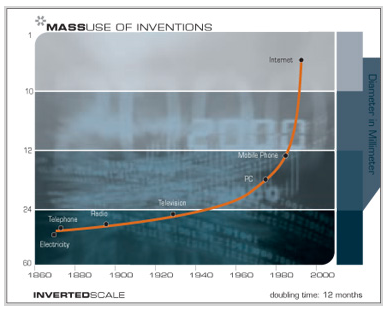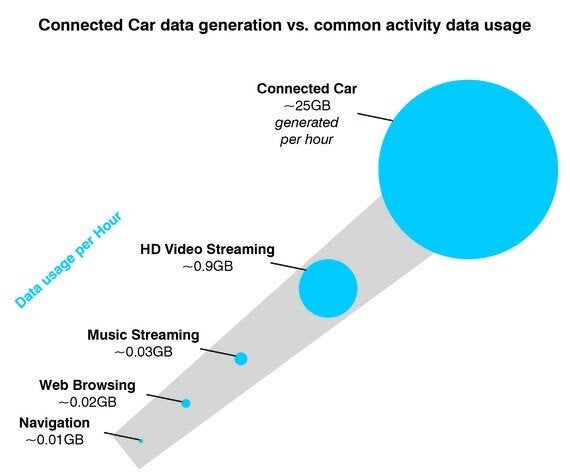With global giants BP and Standard Chartered announcing their wholehearted support for 'the third generation of computing', we can say with conviction that the Cloud has become a standalone technology era. While some residual resistance to the public Cloud remains - which we believe is fuelling the wild underestimation of the economics - the infrastructure is established and here to stay. With the big concepts in place, the industry is turning its attention to the nitty gritty of logistical tweaks, smoothing out security concerns and continuing to expand the ecosystem.
But technology rarely stands still and the fourth generation is already upon us: get ready for Fog computing.
The industry has a natural tendency to swing between centralisation to decentralisation. In the first era, computing was done on large mainframes, which provided a centralised platform driven by the high upfront costs of the system. This was followed by a democratisation and decentralisation of that technology in the client-server generation (era two). The Cloud marked the return to centralisation (era three), ushered in by huge scale efficiencies at Amazon and Google. Now, processing power and select data is being added to the edge of the Cloud network to provide instantaneous computing. This is era four, the Fog.
With the first two generations taking 35 years' to rise and fall, how can this fourth era already by emerging when Cloud is still in its infancy? To paraphrase futurist Ray Kurzweil, 'we live in exponential times'. The speed of progression accelerates with every cycle and we should expect the same progression in the first 20 years of this century as in the whole of the 20th Century. Under this framework, the Fog era is right on cue.

Source: Hypertextual
But something is different this time round. Rather than flipping back to a decentralised system, the Fog is an extension of the Cloud. It focuses on adding intelligence to the edge our networks, so the Fog incorporates the Cloud, rather than pushing it out - there is a place for both.
The Cloud network is perfect for providing business agility and scalability: unlimited computing power is available on demand so that you can build your new mobile application for your business without having to buy any computers - and when it goes viral you simply dial up the power. What Cloud can't do is handle priority-one tasks when a loss of connection is business critical, or where the data generated is too large to pull rapidly from the Cloud. When real-time processing is required, then more intelligence is needed in or near to local devices. This local processing is known as the 'intelligent edge'. Fog computing is the Cloud combined with intelligent edge: F=C+IE.
Artificial Intelligence (AI) systems provide a great example of the requirement for Fog computing, as they devour data. We are at the dawn of a new age in AI, with self-driving cars being one of the highest-profile applications. In the early years, applications such as voice recognition could be done in the Cloud and sent back to handsets over 4G or WiFi connections, but in the case of self-driving cars, the model isn't sustainable. According to research house Bernstein, an hour of Google Maps usage requires processing of 5MB of data, whereas a self-driving car will generate a whopping 25GB from its sensors in the same time. The cars will need their own AI capabilities on board, run through a close-to-source Fog system.
Within the auto industry, Tesla's Model S electric car is already moving in this direction. Last year the US firm booted out its electronics supplier and replaced the system with a monstrous processor that is 15x as big and 90x as powerful.

Source: Bernstein Research
In robotics, factory automation led by an army of intelligent machines has long been touted as the workforce of the future. Recently, low commodity prices reduced capex spending and delayed the installation of advanced AI technology within the manufacturing industry. But early signs of a shift are emerging, with a suspected USD 80 billion of outdated equipment due a robotic upgrade. For automation to deliver on its promise, robots will need AI engines that are highly fault tolerant - a factory cannot stop production because of a server failure in the Cloud or a network outage from the internet provider. Here, front-line Fog systems are the answer, with more intelligence within the robots themselves and the Cloud calculating system optimisations behind the scenes.
The combination of Fog and Cloud technologies is not unlike an efficient company or military, with devolved powers executing on day-to-day activities and taking real-time decisions (Fog), but strategic changes and direction handled at an executive level (Cloud).
Both the Tesla and the robotics example are part of the Internet of Things (IoT), a concept that to-date has only delivered smart fridges and, as a result, disappointment. Adding an intelligence edge to the IoT, fuelled by AI and used in conjunction with the power of the Cloud, is a potent combination and will herald a new wave of technological progress.
